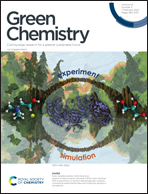Recent progress on immobilization technology in enzymatic conversion of marine by-products to concentrated omega-3 fatty acids
Abstract
Marine by-products (heads, frames, trimmings, viscera, skin and scales) have been extensively investigated as sources of marine omega-3 fatty acids (mainly eicosapentaenoic acid and docosahexaenoic acid). Traditionally, extraction of fish oil and enrichment of omega-3 fatty acids are performed at high temperatures, which require high energy input and may lead to product decomposition. Enzymatic extraction and concentration have been studied as green alternative techniques, and immobilized enzymes are of particular interest for use due to their advantages including high stability, reusability and feasible separation from products. In this tutorial review, recent research progress on immobilization of lipases used for enrichment of omega-3 fatty acids in fish oil is presented and discussed. The frequently used immobilization methods and the commonly studied properties of immobilized lipases are summarized. In comparison to free lipases, immobilized lipases generally have improved stability towards heat, pH and organic solvents due to increased rigidity in their conformation. The activity and selectivity of immobilized lipases are significantly affected by the immobilization method, the support material and the reaction medium. The omega-3 fatty acids in fish oil are mainly concentrated in the form of free fatty acids, ethyl esters or acylglycerols through hydrolysis or alcoholysis of triacylglycerols catalyzed by the immobilized lipases.

- This article is part of the themed collections: Marine-based Green Chemistry and Green Chemistry Reviews


 Please wait while we load your content...
Please wait while we load your content...